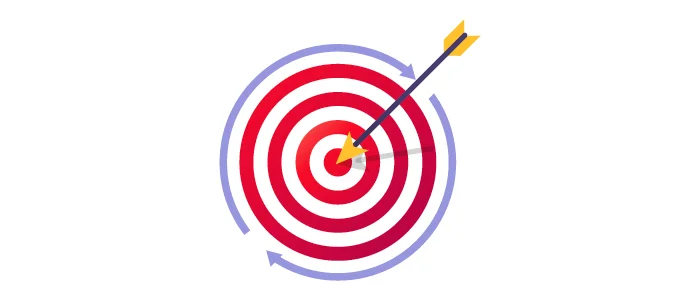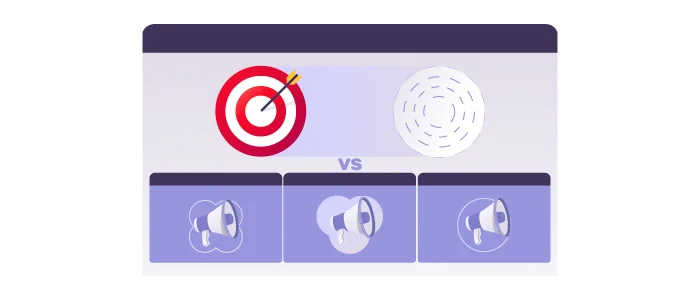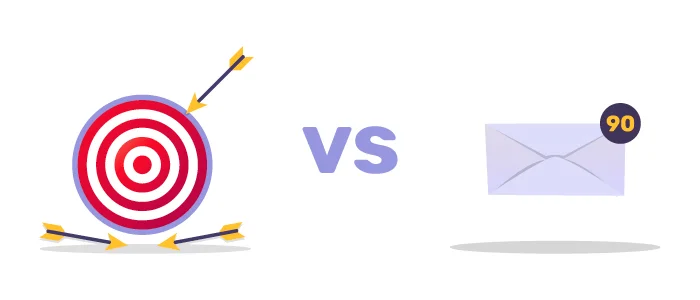Retargeting vs. Remarketing: Which Works Best?
Picture this: You’re scrolling through an online shop, spot something you like, but leave without buying it. A little later, ads for that product seem to follow you around. Maybe you get an email reminding you about the item in your cart. These situations might seem familiar—they’re part of two marketing strategies: retargeting vs. remarketing.
While the terms are often used interchangeably, they involve different approaches to reconnecting with potential customers. How? It all comes down to their unique strategies and methods.
Table of Contents
What Is Retargeting?

Retargeting helps businesses reconnect with people who showed interest in their products but didn’t make a purchase. It works using a small code called a pixel that tracks what users do on your site. Based on this, you can show them ads related to their activity. Retargeting focuses on:
- On-Site Interactions: Targeting someone who viewed a product but didn’t buy it.
- Off-Site Interactions: Showing ads to users who liked your social media post or watched a video about your product.
This strategy works well because it focuses on people already interested in your brand. Retargeting is a simple way to stay on your audience’s radar and encourage them to take the next step.
What Is Remarketing?

Remarketing is the process of reconnecting with potential customers by reaching out to people who already know your brand. It’s a simple way to remind them about your brand and encourage them to return.
- Encouraging Repeat Purchases: Offering a special deal to bring back inactive customers.
- Reminders for Pending Actions: Email customers with expiring subscriptions or unfinished checkouts.
- Upselling or Cross-Selling: Suggesting related products based on past purchases.
Remarketing works because it focuses on people who already know and trust your brand. For it to be successful, messages should feel natural and arrive at the right time. Sending too many emails can be overwhelming, so sharing relevant updates or offers that add value is better.
Focusing on your customers’ needs can help you maintain a positive connection and encourage them to return without feeling intrusive. A balanced approach enables you to keep their interest while building long-term trust.
The Key Difference Between Remarketing and Retargeting

After learning about remarketing, it’s natural to ask how it differs from retargeting. While they share the goal of reconnecting with potential customers, how they achieve this is quite different. Let’s explore some key differences to help you become more familiar with these terms:
Retargeting vs. Remarketing: Who They Target
Retargeting focuses on people who have interacted with your website or social media but haven’t shared their contact information. For example, if someone browses a product on your site and leaves, retargeting shows them ads for that product as they browse other sites.
Remarketing, however, targets existing customers or people already in your database. For instance, it sends personalized emails to someone who made a purchase but hasn’t returned in a while.
Retargeting vs. Remarketing: How They Communicate
Retargeting relies on display ads on external platforms like Google or Facebook. These ads remind users about your brand while they’re on other websites.
Remarketing uses direct communication channels like email, SMS, or app notifications to reconnect with customers.
Retargeting vs. Remarketing: Types of Data Used
Retargeting uses anonymous data, like cookies, to track website visitors and serve ads based on their activity.
Remarketing uses explicit data, such as email addresses or purchase history, provided by customers when they sign up or purchase.
Retargeting vs. Remarketing: Purpose and Goal
Retargeting’s primary goal is to bring back potential customers who are still deciding, helping them move closer to a purchase.
Remarketing is effective because it focuses on people who already know your brand. For the best results, send messages at moments that feel natural to the customer.
Best Practices for Implementing Retargeting and Remarketing

Retargeting and remarketing help businesses reconnect with people interested in their products or services. While they share a similar purpose, they work differently. Knowing when and how to use each marketing strategy can improve your marketing efforts and drive better results.
Best Practices for Retargeting
Retargeting focuses on people who showed interest in your brand but didn’t take the next step. Whether they browsed a product or left your website, retargeting helps you re-engage them through ads.
Segment Your Audience by Intent
Not all visitors have the same intent. For example:
- Someone who added an item to their cart may need a discount to finalize the purchase.
- Visitors who viewed a product page might respond better to ads showcasing similar items.
- You can create tailored campaigns for each group by grouping users based on their actions.
Experiment with Ad Formats
Use dynamic product ads, carousel ads for related items, or video ads to tell a story. For example, if a user looked at a fitness tracker, a video showing its features might catch their attention better than a static image.
Set Frequency Caps
Show ads only a few times per day to avoid annoying potential customers. For example, seeing the same ad three times in one session might discourage users rather than encourage them to return.
Optimize with RTB
Platforms like Google Ads and Meta allow you to use RTB to bid for ad space in real-time, ensuring your ads reach the right person at the right time. For example, someone browsing competitor websites might see your ad and reconsider their choice.
Best Practices for Remarketing
Remarketing focuses on re-engaging existing customers or people already in your database. It’s about nurturing relationships and encouraging repeat purchases through direct communication.
Personalize Emails Based on Behavior
Use data like purchase history or browsing patterns to make emails relevant. For example:
- Send a reminder about items left in a cart.
- Offer a discount on a product they purchased before.
Automate Follow-Ups
Automate email campaigns to reach customers at the right time. For example, send a “We miss you” email to a customer who hasn’t purchased in 30 days.
Incorporate Loyalty Programs
Reward repeat customers with exclusive offers or early access to sales. For instance, if someone frequently buys skincare products, offer a gift with their next purchase.
Keep Messages Simple and Useful
Avoid overwhelming users with too much text or unnecessary visuals. For example, a clear email with a “10% off just for you” message works better than an overly designed email with complicated CTAs.
Test and Refine Campaigns
Experiment with different email subject lines, layouts, and send times to see what gets the best response. For example, test if customers open emails more often in the morning or evening.
Why Separate Strategies Matter
Retargeting is about capturing the attention of people who are still deciding, while remarketing strengthens connections with those who already know your brand. By applying these tailored practices, you can use retargeting and remarketing to create a seamless customer journey that feels relevant and engaging at every step.
Common Mistakes in Retargeting and Remarketing

While following best practices is necessary, knowing what not to do is equally important. Avoiding common mistakes helps your campaigns to remain effective and maintain a positive impression on your audience.
Common Mistakes in Retargeting
Bombarding Users with Ads
Nobody likes being followed around the internet by the same ad repeatedly. It’s annoying and can make people less likely to engage with your brand.
What to Do Instead: Set limits on how often your ads appear. Use a variety of creatives to keep things fresh and interesting, assuring your audience doesn’t feel overwhelmed.
Treating All Visitors the Same
Showing the same ads to everyone ignores the specific needs of different users.
How to Fix It: Group your audience based on their behavior. Customize your ads for each group, such as offering cart abandoners discounts or showcasing related products to browsers.
Neglecting Dynamic Ads
Using generic ads that don’t reflect the user’s activity can make your brand feel disconnected.
Solution: Dynamic ads automatically display items users viewed, making the ad feel more relevant and personal. For instance, if someone browsed a blue jacket, they should see an ad for it, not a generic clothing ad.
Targeting Customers Who Already Purchased
Showing ads for a product someone already bought is a common oversight. This not only wastes your budget but can also frustrate your customers.
What Works Better: Exclude recent buyers from your retargeting campaigns. Instead, use this opportunity to promote complementary products or services.
Ignoring Mobile Optimization
Many users engage with ads on their mobile devices. If your ads or landing pages aren’t mobile-friendly, you risk losing them.
How to Avoid It: Ensure all ads and landing pages load quickly, navigate easily and work seamlessly on mobile screens.
Common Mistakes in Remarketing
Overloading Customers with Emails
Nobody likes an inbox full of repetitive emails. Sending too many messages can lead to unsubscribes or users ignoring your communication altogether.
A Better Way: Focus on quality, not quantity. Instead of flooding their inbox daily, send a reminder about a carted item or a personalized offer.
Using One-Size-Fits-All Messages
Generic emails lack the personal touch that makes users feel valued.
How to Fix It: Use customer data to tailor your emails. Highlight specific products they viewed, remind them about items left in their cart, or suggest items based on their purchase history.
Missing the Right Timing
Waiting too long to follow up after a user interacts with your brand can result in missed opportunities. A cart reminder sent weeks later feels irrelevant.
Solution: Automate your campaigns to send timely follow-ups.
Overlooking Loyal Customers
While focusing on inactive users, you might forget your loyal customers who consistently support your brand. Ignoring them can lead to disengagement over time.
What to Do: Reward loyalty with perks like exclusive offers, early access to sales, or a thank-you email for their ongoing support.
Skipping Performance Reviews
You risk missing valuable insights and improvement opportunities without checking your campaigns’ performance.
How to Improve: Analyze key metrics such as open rates, clicks, and conversions. If something isn’t working, adjust your approach. For example, try different subject lines or tweak your offers to better match your audience’s interests.
Why These Mistakes Matter
When you avoid these mistakes, your customers feel more connected to your brand. Simple, well-timed messages make it easier for them to stay interested and engaged. But sending too many messages or content that doesn’t match their needs can push them away.
By keeping things clear and focused, you can create natural campaigns. This helps your audience feel comfortable and more likely to return to your brand.
FAQ
Focus on metrics like click-through rates, conversions, and ROI. Use tools like Google Analytics to track performance and adjust strategies as needed.
Look at customer behavior to find ideal times. For example, cart reminders work well within 24 hours, while loyalty emails might perform better during weekends.
Change ad designs frequently and try different formats, such as videos or carousel ads. Set limits on how often ads appear to avoid overwhelming users.
Sectors like e-commerce, travel, and education often see great results since customers need multiple reminders before deciding.
Retargeting can show personalized ads for related products, while remarketing emails can suggest upgrades or add-ons based on past purchases.
Final Thoughts
Retargeting vs. remarketing are great ways to reconnect with your audience by addressing their behavior. These strategies bring back potential customers and keep your existing customers interested.
By focusing on messages that align with your audience’s needs, you can create a natural-feeling positive experience and encourage customers to continue their interest in your brand.